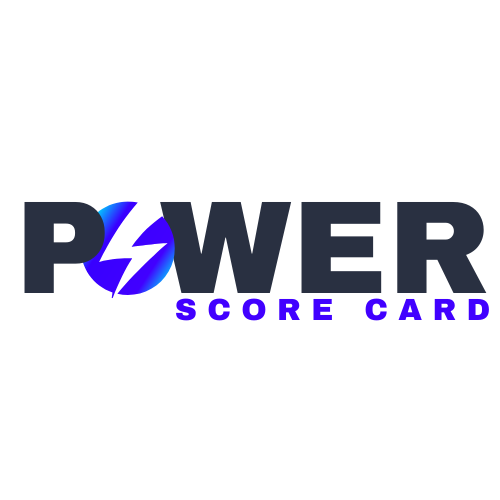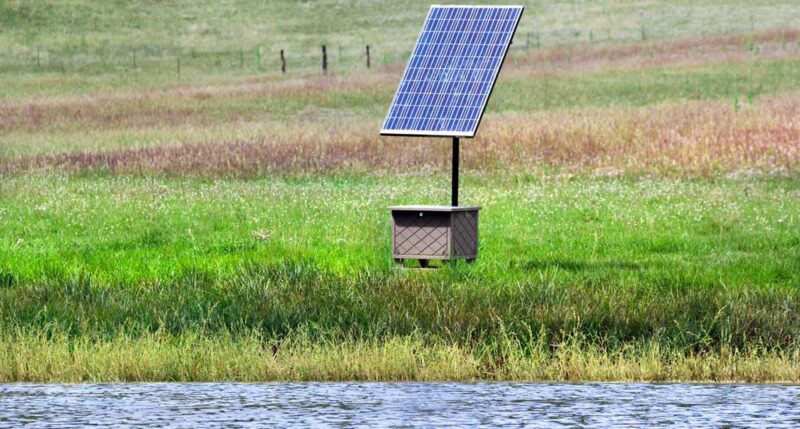Powering a pond aerator with solar panels has become an increasingly practical option for many property owners.
With rising energy costs and greater attention on environmental impact, renewable solutions such as solar-powered aerators offer a sustainable way to keep ponds healthy.
Off-grid locations, where running electricity may be costly or impractical, especially benefit from solar aeration systems.
By looking into how these systems operate, their benefits, limitations, and energy requirements, pond owners can make informed decisions that combine efficiency with eco-friendliness.
Types of Solar Aeration Systems
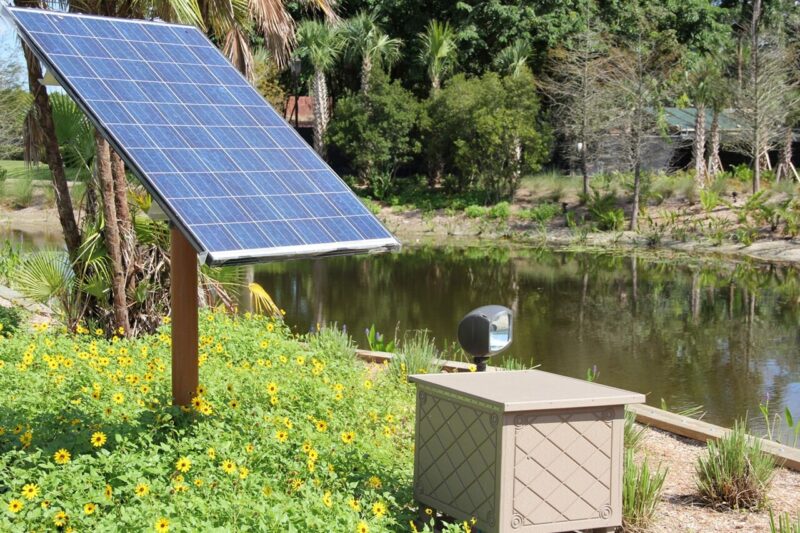
Different solar aeration setups cater to varying pond sizes, energy needs, and user preferences.
Some systems focus on affordability and simplicity, while others prioritize long-term reliability or flexibility.
Choosing the right type often comes down to balancing cost, performance, and the specific environmental conditions of the pond.
Direct Drive Solar Aerators
Direct drive aerators run directly on solar energy without batteries or storage.
Their operation stops once the sun goes down or clouds block light.
For ponds located in sunny regions, this option can still provide adequate oxygen levels, especially during daytime when biological activity and oxygen demand are highest.
Key characteristics:
- Operates only during daylight hours
- Simple installation with minimal components
- Lower upfront cost compared to other systems
- Ideal for sunny climates with predictable weather
- Requires no battery maintenance or replacement
Solar Aerators with Battery Backup
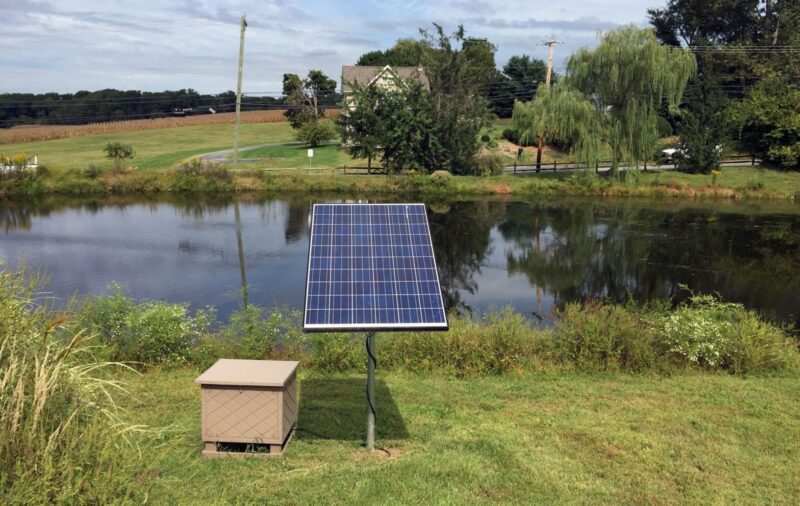
Battery-backed aerators store excess energy during the day, ensuring continuous operation even after sunset or during periods of low sunlight.
By maintaining oxygenation around the clock, these systems protect fish health and improve water quality in demanding conditions.
Key characteristics:
- Stores solar energy for night use or cloudy weather
- Capable of running up to 20 hours per day
- Higher initial investment and more complex setup
- Reliable oxygen supply for ponds with sensitive ecosystems
- Long-term durability with proper battery management
Solar Generators (e.g., Jackery)

Portable solar generators provide a flexible solution that goes beyond powering aerators.
Since they function as standalone energy banks, they can also run lighting, pumps, or other small devices.
Their portability makes them an excellent option for pond owners seeking a versatile backup energy source.
JetStream systems are powerful tools that can provide the necessary support for muck and weed control, making them ideal companions to solar-powered setups in larger or more demanding pond environments
Key characteristics:
- Portable and suitable for multiple uses, not just aeration
- Can be charged with solar panels or traditional outlets
- Excellent for seasonal use or as an emergency backup
- Supports devices beyond pond aerators, adding value
- Offers flexibility for remote or off-grid applications
Key Benefits of Solar Pond Aerators
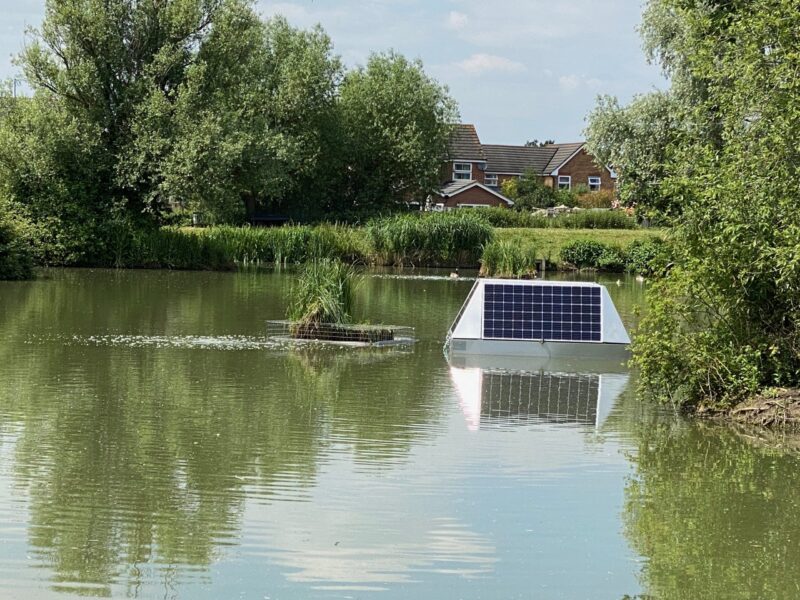
Now, let us address some of the key benefits of opting for a solar pond aerator.
Environmentally Friendly
Solar aerators reduce dependency on traditional grid power and help cut down harmful emissions.
By relying on renewable energy, pond owners actively support cleaner energy practices while keeping ecosystems balanced.
For those who prioritize eco-friendly solutions, the choice of solar-powered aeration goes hand in hand with broader sustainability goals.
Cost Savings Over Time
Although installation requires an upfront investment, operational costs remain extremely low.
Solar-powered aerators eliminate recurring electricity bills and reduce the need for expensive wiring or trenching, particularly in remote areas.
Over the years, this translates into substantial financial savings when compared to grid-connected systems.
Many pond owners find that the system eventually pays for itself through reduced utility expenses.
Low Maintenance
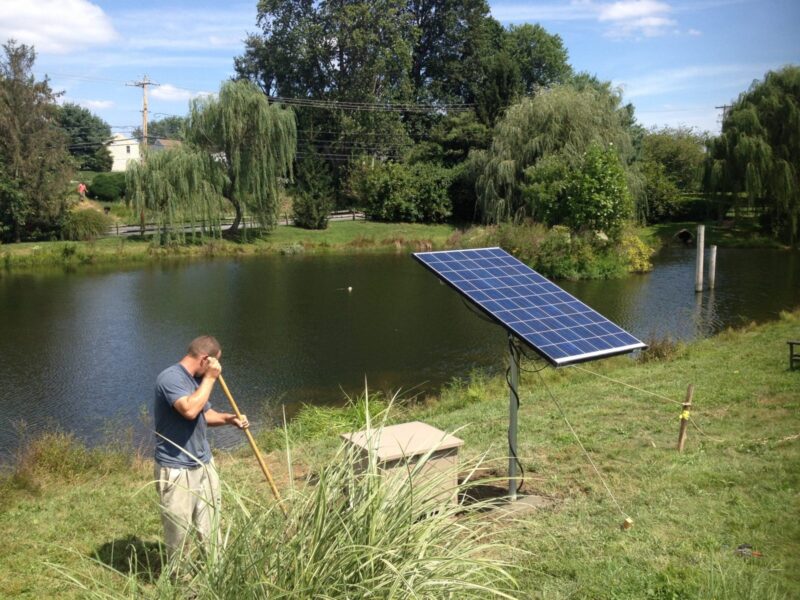
Maintenance needs are minimal compared to gas-powered or electrically wired alternatives.
Solar panels are built to last for decades with only occasional cleaning to maintain efficiency.
The aeration units themselves usually require basic checks and light servicing rather than frequent repairs.
With fewer mechanical parts in operation, the likelihood of breakdowns decreases significantly, making solar aerators both reliable and user-friendly.
Flexibility
Solar aeration systems provide unmatched flexibility in terms of placement and usage.
Remote ponds, agricultural water bodies, and off-grid properties can all benefit since no electrical infrastructure is needed.
In addition, systems equipped with portable solar generators give owners the freedom to adapt, move, or expand aeration setups as needed.
Potential Limitations & Challenges
After learning about the benefits, we should take a look at potential challenges.
Weather Dependence
Since direct sunlight drives the system, reduced solar exposure from cloudy or rainy conditions affects efficiency.
In regions with unpredictable weather, performance can drop without a reliable backup.
Adding battery storage or a solar generator helps maintain continuous operation, though this increases the overall expense and complexity of the system.
Higher Initial Cost
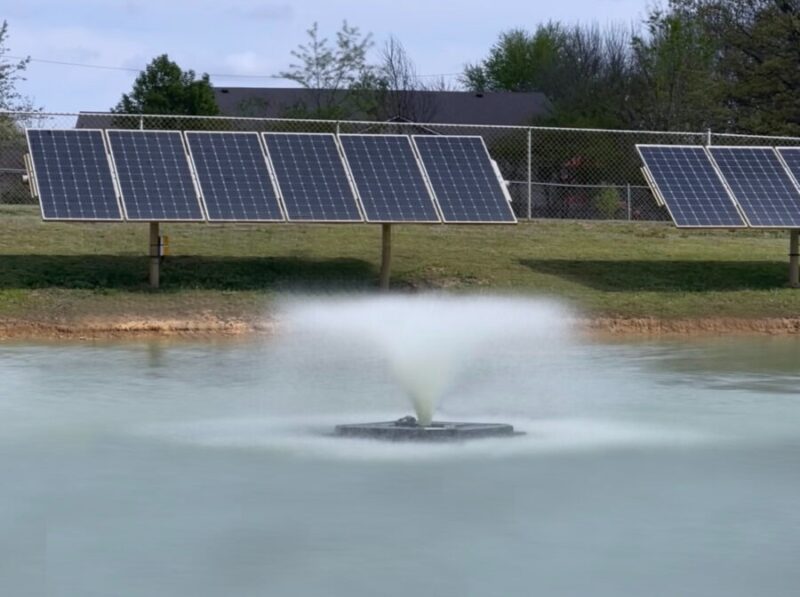
Initial investment is often higher than that of a conventional plug-in aerator.
Systems that include batteries or generator components require larger budgets, which may be challenging for pond owners seeking a low-cost solution.
However, these costs are typically offset over time through reduced electricity use and lower maintenance requirements.
Sizing and Installation Considerations
Choosing the right size system is essential for keeping pond water properly oxygenated.
Undersized setups can lead to poor water quality and threaten aquatic life, while oversized systems may result in unnecessary expense.
Correct placement of solar panels is also critical, as shading from trees or nearby structures can limit energy generation.
Housing and securing components to protect against environmental damage or wildlife interference further add to installation planning.
Power Requirements: How Much Solar Do You Need?
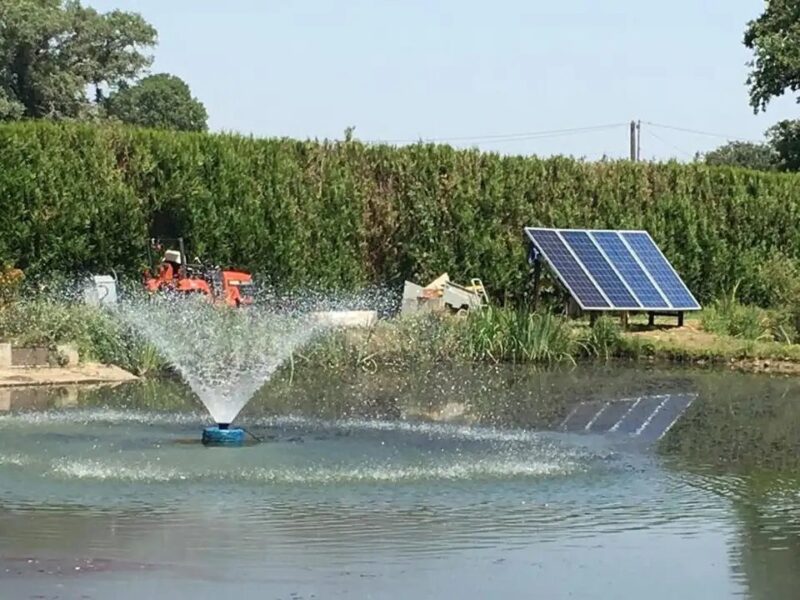
Sizing a solar system for pond aeration depends on both the aerator’s power rating and the daily runtime required.
A small garden pond with minimal fish may only need a few watts of power, while larger ponds or fish-heavy environments demand much higher wattage.
Proper calculations ensure that solar panels and storage meet the aerator’s operational needs throughout the year.
General Wattage Ranges
- Small aerators: 4.5W to 35W, suitable for small backyard ponds or decorative water features.
- Medium aerators: 50W to 200W, appropriate for ponds up to 1 acre or those with moderate fish stocking.
- Large aerators: 100W to 500W or more, designed for multi-acre ponds, commercial fish farms, or ponds with high biological demand.
Energy Consumption Formula
To estimate total energy needs, use: Energy (Wh) = Power (W) × Time (hrs)
For example:
- A 50W aerator running for 10 hours consumes 500Wh daily.
- A 200W aerator running for 8 hours consumes 1,600Wh daily.
- A 500W aerator running for 12 hours consumes 6,000Wh daily.
These calculations guide solar panel sizing and battery selection.
Example with a Solar Generator
A Jackery Solar Generator 1000 Plus, which has a usable capacity of about 1,260Wh, can run a 200W aerator for roughly 5 hours (200W × 5 hrs = 1,000Wh).
To extend the runtime, larger-capacity generators or additional solar panels would be required.
Summary
Solar panels can effectively power pond aerators.
With options ranging from direct drive systems to battery-backed setups and portable generators, pond owners have multiple solutions at their disposal.
Although upfront costs and installation planning are necessary considerations, long-term savings and environmental advantages make solar aeration an attractive choice.
For remote ponds, eco-focused users, and those seeking energy independence, solar aeration delivers both practicality and sustainability.
